Syria’s water crisis, who pays the price?


Saleh Malas – Zeinab Masri
“So that my children do not go to sleep while thirsty!”
With these words, Khaled, a resident of As-Suwayda governorate, justified borrowing money to buy safe and clean drinking water after it was cut off from his home a month ago.
Besides the difficulty of securing his family’s daily needs, Khaled, an employee in the Syrian regime’s Education Directorate and father of three children, suffers from the difficulty of having access to clean water. His night extra work’s income isn’t enough, that’s why he has to borrow some money to secure water.
Regardless of the different areas they live in and irrespective of who controls these areas, whether the Turkish-backed Syrian opposition in north-western Syria or the Kurdish-led Autonomous Administration in north-eastern Syria or the Syrian regime in the rest of the areas under the control of the Syrian regime, 15.5 million Syrians lack access to safe drinking water and safe sanitation.
In this file, Enab Baladi discusses, with researchers and specialists, the water crisis experienced by citizens in various Syrian cities, which hit last August, the residents of the city of Hasakah, northeastern Syria.
People go thirsty all over the Syrian territory … What are the reasons?
The residents of As-Suwayda, Southern Syria, have experienced a great shortage of clean water for several months. They also hold the Syrian regime’s Water Supply Authority (WSA) responsible for the water crisis. The WSA administratively oversees the dams (such as “ar-Roum Dam” in the Dahr al-Jabal region, in addition to the wells that supply water to the homes of citizens in the governorate.)
However, a source in the WSA in As-Suwayda (whose name is withheld by Enab Baladi for security reasons) explained that the causes of the recent crisis are the disruption of a number of wells belonging to the WSA that provide water to many villages and towns in the governorate, in addition to the frequent power outage on these wells.
Meanwhile, a volunteer at the Red Crescent branch in As-Suwayda governorate said that the organization provided power generators to several wells in the governorate to be resorted to in the event of power outages.
Abu Tarek, a resident from Shahba area in Northern As-Suwayda, found the justifications for the interruptions in the water supply given by WSA to be unconvincing. He expressed that it underscores the local community’s accusations to the authority of negligence and failure to fulfill its responsibilities towards the citizens.
Moreover, Abu Tarek denounced the authority’s delay in repairing water wells. He told Enab Baladi: “It is unacceptable that the water well that provides water to thousands of residents takes months and sometimes years in order to be repaired, that is in addition to the absence of reserve water wells.”
The price of a water tanks ranges between five thousand Syrian Pounds ( SYP- approximately 2.26 USD) and eight thousand SYP ( around $ 3.61), A price not many people can afford because prices, compared to monthly incomes, are too high, especially given that one family needs at least four water tanks per month.

A Syrian man filling drinking water from water tanks provided by Syrian organizations during water -cuts in al-Hasakah, North-eastern Syria – 22 August 2020 (AFP)
No water networks to supply homes
From the south to northern Syria, Mohammed Zaytoun faces difficulty securing clean water, as his home located west of Kafr Arouk village, north of Idlib city, is not supplied with water because of the lack of any existing water networks.
Although one of the organizations operating in Idlib allocates a free water tanker truck every month to homes that do not have access to the water network, the financial cost incurred in transporting the water also constitutes a burden on the residents of Zaytoun.
The water tanker suffices Zaytoun’s family for a week, and it is provided to him from the “Goal” organization for free, but he pays the cost of transporting it 30 Turkish Lira per week, i.e., the equivalent of 120 Turkish Lira per month (1 Turkish Lira is about 290 SYP or 0.1 USD).
Zaytoun complains about the burden of water due to unsafe water and poor sanitation, fearing he will not be able to buy water after a while, as he is a daily wage worker, and he cannot find a job easily in addition to the rising water prices and higher transportation costs.
Besides, the price of a tank with a capacity of 20 barrels reaches 30 Turkish liras, while the price of a tank with a capacity of 40 barrels to 60 Turkish liras in northwest Syria.
Zaytoun told Enab Baladi that water tank truckers are available, but most of them are operating with organizations. He finds it difficult even to secure water from the wells existing on the eastern and western sides of the village.
Alternative tankers to water networks
As an alternative to the missing water networks connecting homes and displacement camps spread out throughout northwestern Syria, water tankers extracted from the wells scattered in those areas are transported to the population.
Mohamed Hazem, the owner of a 35-barrel tank truck, refills water from a well west of the town of Killi, to deliver it to the homes and camps of Kafr Arouk, which are not connected to the networks.
In addition to the 15 Turkish Lira that Hazem pays for one tanker, he faces difficulties in his work, such as waiting about an hour for his turn in front of the well, the rugged roads, especially the roads leading to camps, and the high price of diesel.
Hazem told Enab Baladi that water in northern Syria is provided from wells, whether it is supplied through networks or by water tanker trucks, and relief organizations in northern Syria provide the camps with water for free, pointing out that its price is on the rise due to the rising cost of transportation, which is itself affected by the increasing fuel prices in the north.
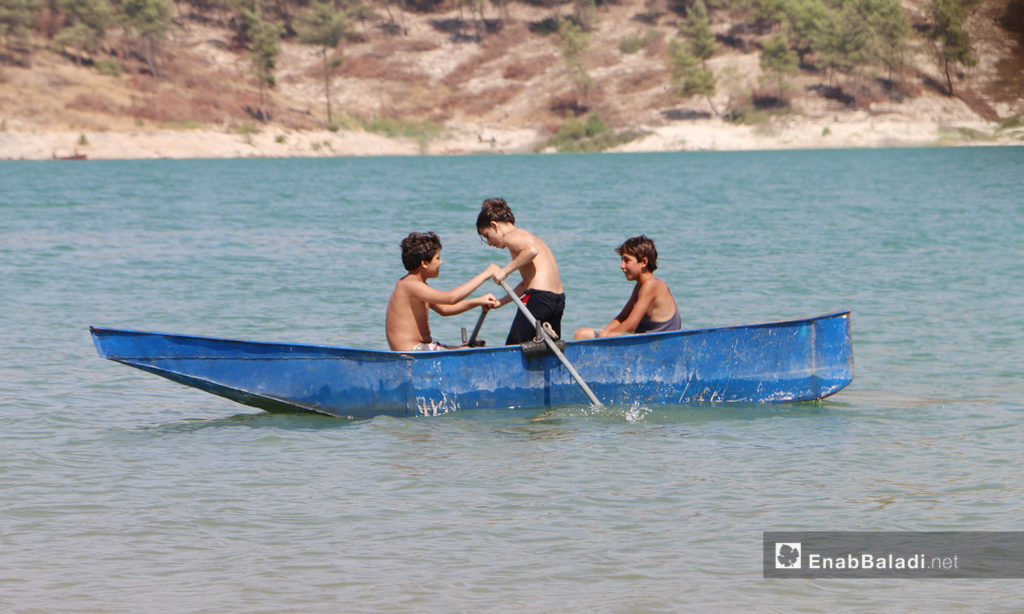
Children rowing a boat on Maidanaki Lake in Afrin, Northern Syria – 21 July 2020 (Enab Baladi / Abd al-Salam Majaan)
Service whenever and as far as possible
The Syrians had suffered a severe shortage in services before the eruption of the Syrian uprising, but the lack of services in areas controlled by the Turkish-backed Syrian opposition worsened as a kind of “punishment” imposed by the Syrian regime, according to Abdul Majid Agha, the assistant minister of local administration and services in the “Syrian Interim Government (SIG).”
Talking to Enab Baladi, Agha said that the areas under the administration of the SIG and local councils suffer from a significant lack of funding, especially in terms of infrastructure projects, including water tanks, water distribution networks, and pumps.
He pointed out that the infrastructure has been deliberately bombed for years by the Syrian regime and its allies, with no care or concern to neutralize or preserve it, which exacerbated the human need and suffering of the resident and displaced populations.
To fill part of the significant shortage in drinking water and to provide solutions to deal with the water crisis in the areas under its control, the SIG, along with local councils and public actors, began digging artesian wells, as the Syrian regime and the “Syrian Democratic Forces” (SDF) keep cutting off water from these regions.
Furthermore, the government subjects the water needs of all areas under its control to a “continuous” assessment and interacts with international bodies or organizations, such as the “Reconstruction Trust Fund,” to try to meet the water needs.
In cooperation with local councils, the government is currently studying two potable water projects in the Afrin region and another project in the city of Jarablus. Still, the shortage is so acute, and the area is so much in need of water, according to the minister’s assistant.
Agha held the Syrian regime responsible for depriving, for nearly four years, about 500,000 people living in the city center of al-Bab, al-Rai, and Akhtarin and their villages, in northern Syria, despite the appeals of the citizens made through international and relief organizations such as the “Red Crescent” Organization, to stop the water outage, as 250,000 people live in the city of al-Bab and Bizaah. Both cities rely on water provided from the pumps of Ayn al-Bayda, located 12 kilometers south of al-Bab.
Syria’s politicized water resources…
a way to secure loyalties and provide leveraging power in settlements
Since Syria’s former President, Hafez al-Assad, came to power in 1970, successive Syrian governments have controlled and used water for political gains. The Syrian regime uses water resources, according to a report published by the Washington Institute for Near East Policy, to gain allegiances, intimidate opponents, to suppress and control the people.
According to the report, “Families who have strong ties with the Syrian regime and live in homes near Damascus, enjoy more freedom to drill wells independently and without registration. About 87% of water wells in Damascus are unlicensed, while the percentage of unlicensed wells outside Damascus is only 38%. In addition, legal requirements are strictly enforced outside Damascus. While 25% of the illegal wells outside Damascus were regulated by the government between 1998 and 2000, only 11% of the illegal wells were organized inside Damascus during the same period.”
Relying on a 2006 study carried out by the Lebanese journalist Elie Hajj, the report explained these differences pointing out that “the more loyal and connected the family are to the regime, the more freedom they have to dig wells and obtain water.”
Over the past decades, the Syrian regime has dealt with water resources as a national security issue, according to an analytical study of the situation of water resources in Syria, published by the researcher at the Omran Centre for Strategic Studies, Mohamed al-Abdullah in 2015. Indeed, the statistical data issued by government departments in Syria regarding water resources, since the Baath Party took power, have turned water into nothing but a tool used by the regime to plunder the people’s resources, “after the regime had mobilized such data within its security system, to be raised and lowered according to its will, using it as a cover to conceal its political and economic agenda.
According to the study, the lack of transparency in the issuance of statistical data in accordance with international professional standards adopted for the dissemination of data and statistics contributed to forming a blurry picture of the nitty-gritty of the national economy.
In its future vision, the Syrian regime is fully aware of the importance of water resources in maintaining its influence in Syria, as researcher al-Abdullah told Enab Baladi. In case it fails to control the whole Syrian territory, the regime drew back in 2015 its project by identifying its most priority areas of influence with its allies, under the name of “Useful Syria,” which does not exceed 25% of the total area of the country.
As per the proposed scenario of the “Useful Syria” Project, the Orontes and the coast basins, and part of the Barada Basin will be included within the project so that the regime can secure sufficient water resources to meet its future needs, according to Al-Abdullah, that is beside the regime taking advantage of it as the only outlet on the Mediterranean, which will give it a tremendous strategic advantage to benefit from the abundant natural resources in the coast and al-Ghab Plain, in addition to using it as a lever in any future negotiations or political settlements.
According to al-Abdullah, “the Useful Syria” project that the Syrian regime had proposed was not the only project to attach great importance to water resources and to utilize them for political purposes in Syria’s present and future. All the conflicting parties in Syria focused their efforts on controlling water resources and using them to exert military, economic and political pressures in order to consolidate their influence in the areas they control.
Al-Abdullah highlighted that the forces on the ground are exploiting the water resources regardless of the negative consequences that might befall the country. Similarly, some of these parties are deliberately damaging the water reserves with the aim of forcing the population in specific areas to migrate.
He added that this policy is widely employed by the Syrian regime, which, over the past years, has resorted to deliberately damaging the water resources, especially in the areas under the control of its opponents.
In the governorate of Daraa, the regime forces deprived in 2016 the population and the agricultural lands of the water coming from Jabal al-Arab, after having built detention and surface dams in As-Suwayda governorate. This move has led to drying out many other dams, such as the Eastern Daraa dam, which is the largest dam in the region with a capacity of 15 million cubic meters and one which supplies large areas (approximately 10,000 dunams).
In Damascus, the Syrian regime cut off drinking water in the Yarmouk Camp, South of the capital, in September 2014, and diverted sewage water to the then besieged Jubar neighborhood “to collectively punish” the neighborhood’s residents.
Military control over water facilities in northern Syria
Recurrent crises affecting Syria’s water reservoir
There are 16 rivers in Syria, in addition to their tributaries. According to UNICEF, the Euphrates (the largest river in the country) is considered the only source of drinking water for more than two million people living in Aleppo and the eastern areas of the city.
In his interview with Enab Baladi, the Syrian researcher Muhannad al-Kat said that “the Euphrates Dam provides 2.5 billion kilowatt-hours per year,” stressing the importance of this Dam (West of Raqqa, North-eastern Syria), which is the largest water reservoir in Syria and the second largest Arab dam after the Aswan High Dam in Egypt.
“The Euphrates Dam is under the control of the Kurdish-led Autonomous Administration of North and East Syria (NES), which is accused by the Turkish-backed Syrian opposition of “systematically using water as a weapon in the conflict,” said the assistant minister of Local Administration and Services in the SIG, Abdul Majid Agha.
Head of NES’s Economy and Agriculture Authority, Salman Barudo, accused, in a previous interview with Enab Baladi, the Turkish-backed opposition factions of using water to exert pressure on the NES and “thwart its developmental projects in the region.”
Barudo based this accusation on a joint statement issued by 89 human rights organizations that condemned Turkey and the Syrian local councils of depriving civilians of drinking water for the eighth time in a row and using water to blackmail certain parties.
Al-Kat expressed his concern over these repeated exchanges of accusations, which may hinder any attempt to find suitable solutions to manage the water crisis, adding that cutting off water directly or indirectly in the cities of North-eastern Syria as a method of warfare amounts to a “war crime.”
The expert described this twisted method as a “criminal act” that threatens the lives of individuals, whose rights must be preserved and respected by all the warring parties, without any exception.
Hanaa Sanjar, UNICEF Resident Representative in Syria, revealed that all the parties to the conflict have used water as a weapon during the conflict.
Water scarcity: A prominent crisis in Syria and a threat to social and economic stability
The Syrian population have been facing successive livelihood crises since 2011. Lack of access to safe water sources have constituted an additional crisis – besides the expensive products, and their high prices, the deterioration of the value of the Syrian Pound, the falling incomes, lack of access to fuel, the Syrians find themselves unable to secure access to water.
With the decline in the per capita share of available water reserves, the ability to provide water has become the most outstanding challenge for the Syrians due to the destruction of water sources and infrastructure. Hence, obtaining clean, usable water, or securing the material resources to provide it, has become a challenging task for the population with the continuous rise in poverty rates and insignificant income, according to al-Abdullah, the economic researcher at the “Omrane Strategic Studies” Centre.
Talking to Enab Baladi, al-Abdullah said that the severe damage done to the water sector has weakened the authorities’ ability to meet the demand for drinking water and led to suspending the water projects underway.
This subsequent damage inflicted on water facilities has also hindered the authorities’ capacity to reverse the effects of water pollution, worsening with the continuous power cuts and the difficulty of providing the necessary quantities of fuel to operate the water and sanitation stations as well as the successive attacks on the water networks, and the discriminatory method of supplying water to areas which are controlled by a given political or military force, as in the regime-controlled areas and the NES-run areas.
The economic expert believed that all these factors, in light of the worsening living conditions, the increase of drinking water prices in many cities and rural areas, and the inability of a large proportion of the population to have regular access to clean water, will pose an actual threat to the social and economic conditions for the residents where they live or will force many of them to drift elsewhere in quest of sustainable access to sufficient quantities of decent quality water.
According to a United Nations report issued in August 2015, the number of water reserves in Syria decreased to half compared to the period before 2011.
The report also documented evidence on the use of the parties to the conflict in Syria of the water issue later to make political and military gains. It also documented the damage caused to water pipelines and infrastructure by the hostilities occurring in Syrian cities.
The Successive power cuts and fuel scarcity have worsened the water crisis in Syria, since the absence of these sources of energy in most Syrian cities hinders the functioning of turbines and pumps to supply water to the population, often resulting in suspending water distribution operations for long periods.
Researcher, Firas Shaabou, told Enab Baladi that after years of conflict in Syria, water sources have become utterly undrinkable due to the authorities’ failure to maintain adequate and hygienic treatment thereof, on account of the deteriorating conditions at all levels, in particular the financial one., thereby affecting the Syrian citizen’s health and social life.
According to Shaabou, obtaining drinking water has become in itself a financial burden. It has been close to causing a “catastrophe” in some cases for residents in various Syrian regions, especially in the light of extremely high prices, business recession, and falling incomes.
The researcher added that many people in the countryside have resorted to digging wells as one of the solutions to provide water, whether for personal or for agricultural uses. However, these initiatives are individual and cannot be adopted at the state level.
The agricultural sector in Syria has witnessed a significant decrease in the volume of crops and production because of war, displacement, and inconsistent irrigation due to the lack of water. This has compelled many people to abandon their lands and refrain from farming them. Additionally, the periods of drought in the region have contributed to a great extent to weakening or halting the development of the agricultural activity. The interruption of water supply via the previously built canals, rivers, and some feeder canals is likely, according to the researcher, to add up to a “water gap” awaiting Syria in the future.
Recommendations to overcome the water deficit
There is a state of uncertainty about the future availability of water resources in Syria due to variables that will be determined later by the effects of climate change and changing water management policies. These two factors will thus have an undeniable impact on the future availability of water in Syria. It is expected that climate change will reduce surface and groundwater resources by 1,300 billion cubic meters in 2050, according to a study on the potential availability of water in Syria, published by Lund University in 2011.
There are indications of a coming water gap due to the depletion of water reserves during the ongoing conflict. On the other hand, pollution levels have been increasing since the beginning of 2011, according to researcher al-Abdullah, due to the systematic destruction of water facilities by the warring parties using these resources as a weapon against each other.
According to al-Abdullah, owing to the destruction of water infrastructure in Syria, it is estimated that half of the total production capacity has been lost or damaged, in addition to the potential impact of this deficit on population, sustainable development, and the reconstruction processes.
World Bank data indicate that the losses in the water sector, amounting to 121 million USD, are the highest. The armed conflict has also led to the death and displacement of many workers in the water and sanitation sector. Consequently, about two-thirds of the Syrian people have been supplied with water from medium to high-risk resources. Water availability in Syria has gone down from 75 to 25 liters per person.
Syria is thus facing an alarming water crisis, and the conflicting parties should become more aware of the danger that could threaten the Syrian cities due to the decline in the quantity and quality of water resources, as al- Abdallah recommends. The warring forces should also be concerned with discerning the situation of water resources at their disposal in terms of its reserves, the diversity of its sources, the methods of its use, and its investment for the benefit of civilians, and not for political or military gains.
The conflicting parties in Syria must apply the integrated management of water resources, which, according to Al-Abdullah, includes many subsystems, such as the water resources management system, the water services management system, in addition to supporting the capacity to make effective decisions to improve the management of these resources and promote food security.
Moreover, increasing regional cooperation between Syria and the neighboring countries could help overcome the water deficit in some basins, once a comprehensive political solution to the Syrian conflict is reached.
The economic expert also recommended paying more attention to water treatment plants by expanding the construction of the facilities necessary for treating industrial and agricultural wastewater and working on raising their capacities, in cooperation with the specialized international organizations.
At the same time, their focus should be placed on a water-related legal framework through the development of legislation and regulations governing the exploitation of water resources, the tightening of control over their implementation in a transparent way, and the toughening of sanctions against offenders.
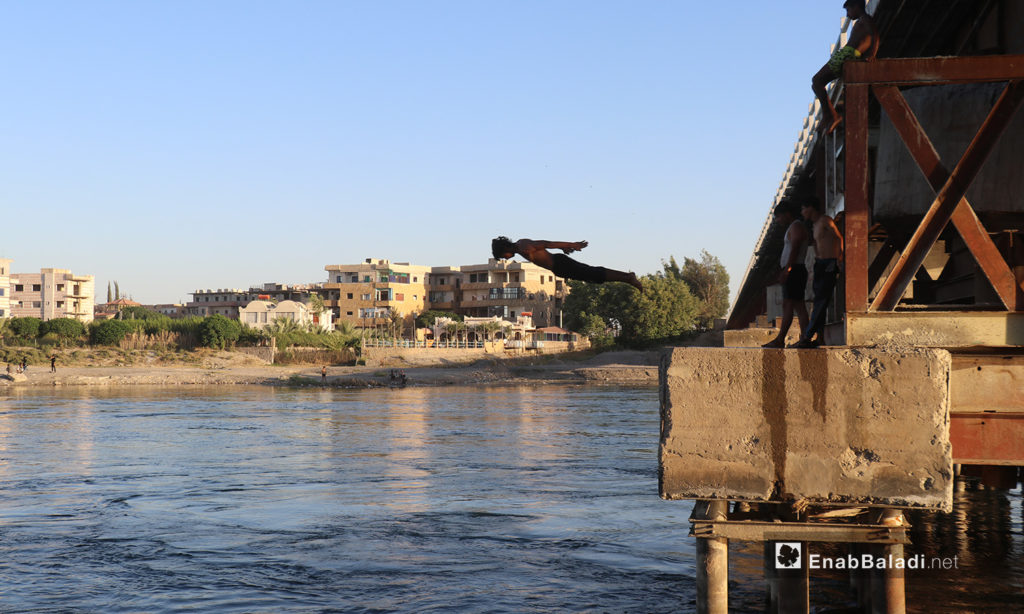
A young man jumping to swim from a bridge crossing the Euphrates River in Raqqa Governorate – 24 July 2020 (Enab Baladi / Abdulaziz Saleh)
if you think the article contain wrong information or you have additional details Send Correction
النسخة العربية من المقال
-
Follow us :

















 A
A
A
A
A
A
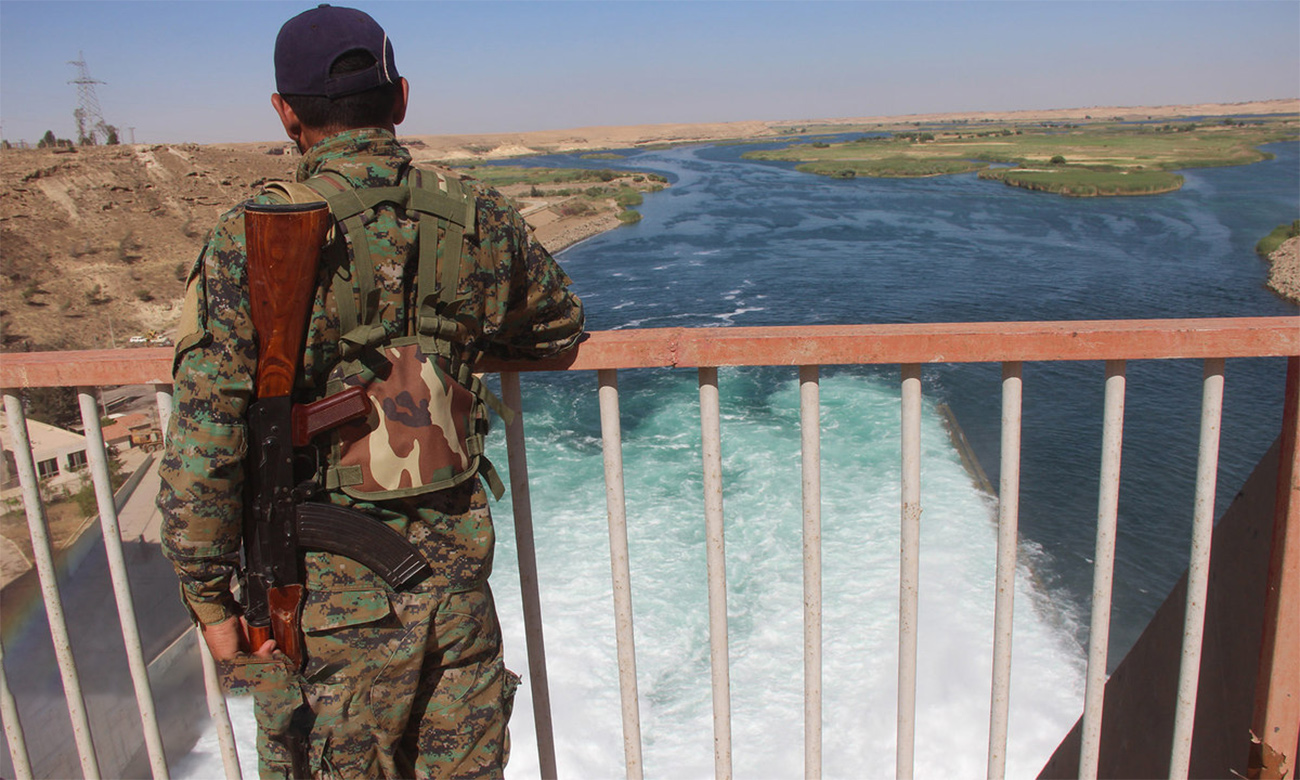
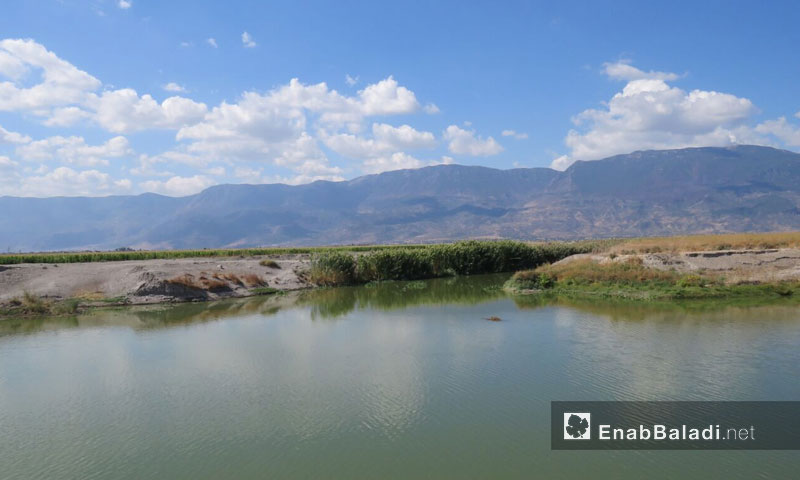
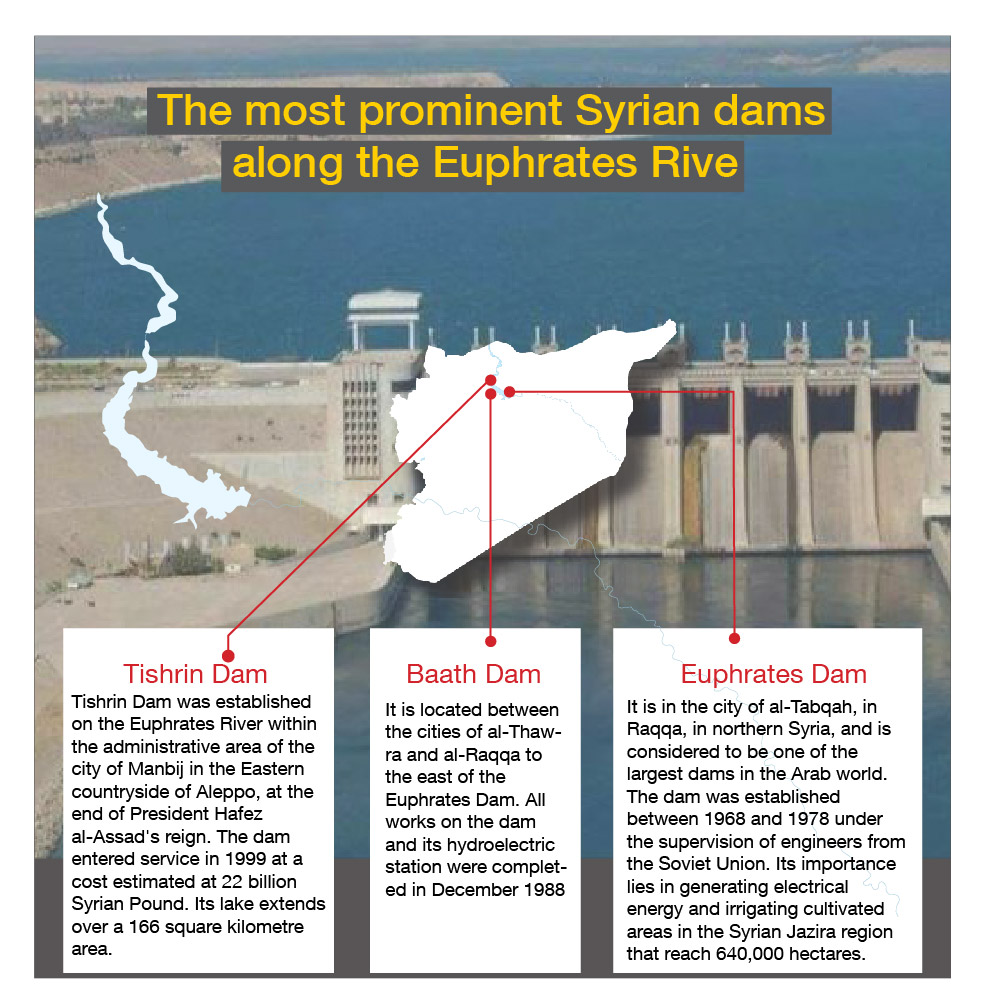
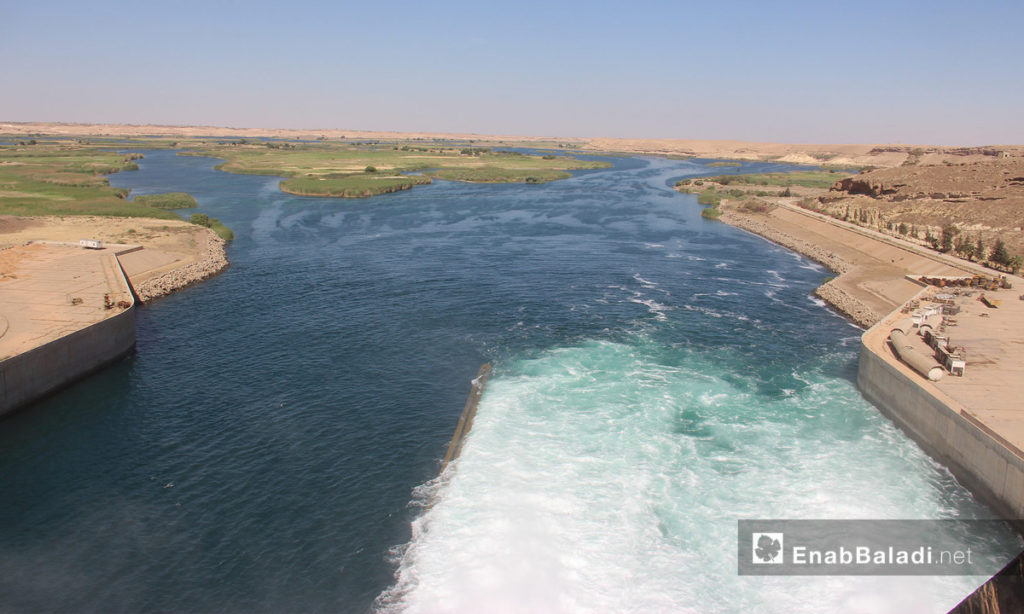


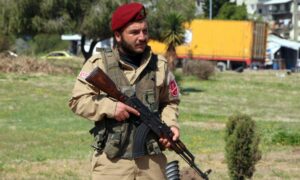
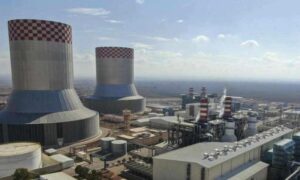
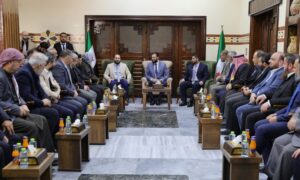
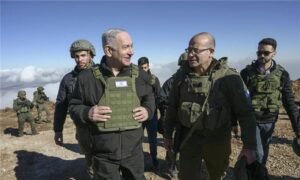
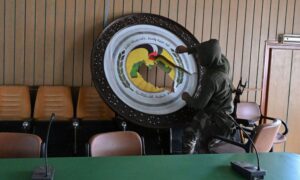
 More Investigations
More Investigations